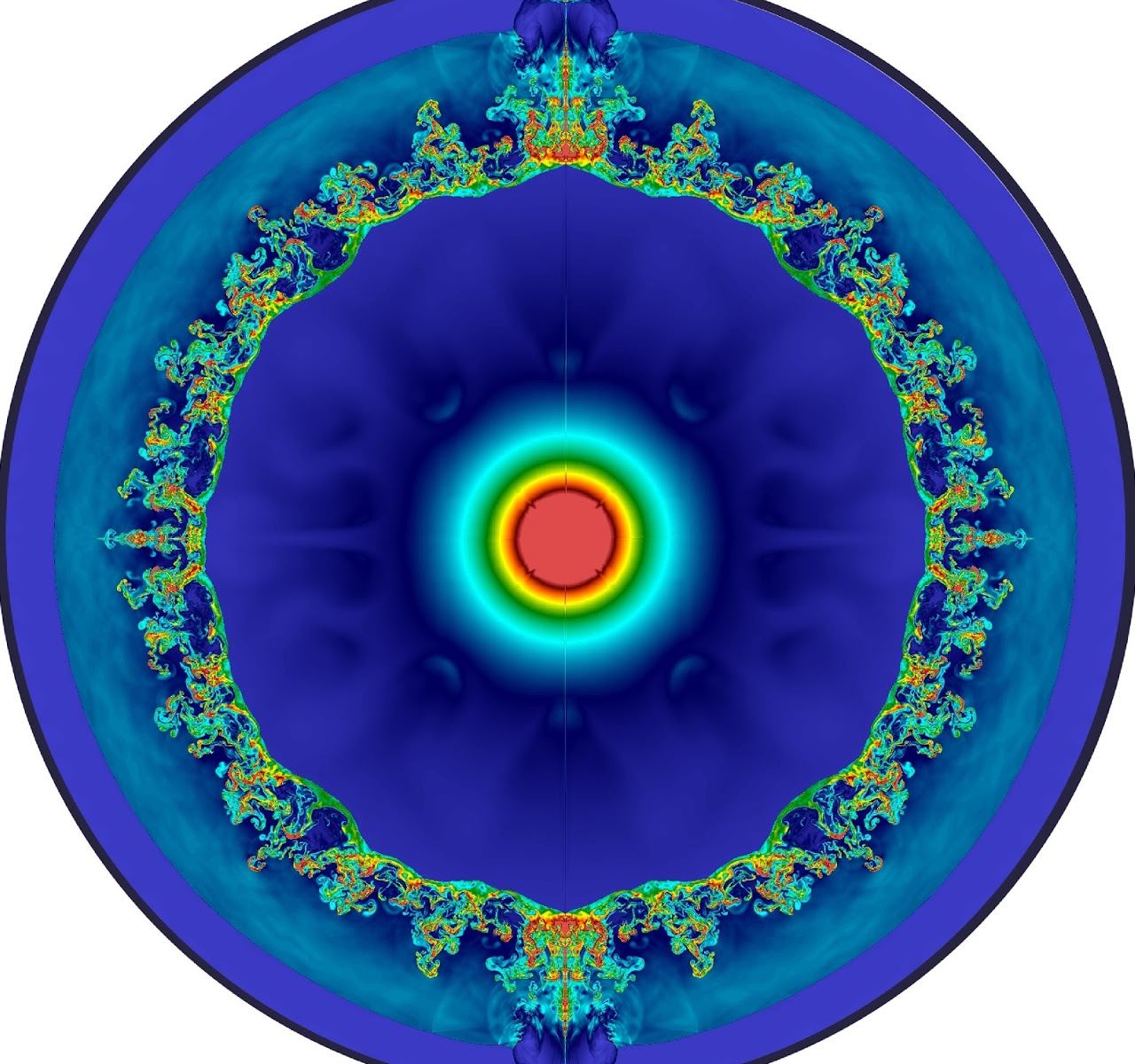It’s kind of hard to see inside a star as it’s blowing up, because of the whole “blowing up” part, but gravitational waves – tiny ripples in the fabric of spacetime itself – may help astronomers unlock how the biggest stars die.
It takes a lot of raw energy to power a supernova. When the biggest stars die, they can outshine entire galaxies (that’s hundreds of billions of stars, for anyone counting). And while we know that supernovae do happen, we’re not exactly sure what triggers them.
We do know a few things, however. In the last moments before a star goes kablooey, it has a core of iron surrounded by layer after infernal layer of fusing elements. The rest of the star squeezes down onto that core, fusing the iron into heavy elements, but that fusion doesn’t release any energy.
Without a source of energy, the collapse of the star becomes unstoppable. But at the last moment, right before total catastrophic breakdown, the intense pressures shove electrons into protons, turning them into neutrons. The resulting giant ball of neutrons (a proto-neutron star) is able to briefly halt the collapse, triggering the explosion.
Or not.
Simulations of this process have a hard time going from “bounce” to “bang” – there seems to be some missing ingredients. The conversion of protons into neutrons also releases a flood of tiny particles known as neutrinos, which mostly freely stream away (indeed, 99% of a supernova’s energy goes into neutrino emission), and it’s not exactly clear how and if those neutrinos can assist the explosion.
But there might be another source of energy. It could be that in the very, very last moments before a supernova detonation, the neutrons and protons undergo one more transformation, turning into an exotic plasma of fundamental particles known as a quark-gluon plasma.
This phase transition would release a new round of fresh energy, perhaps exactly what’s needed to power the supernova. But uncovering if this is the true story is a tricky task, since we can’t look inside the supernova as it’s happening.
But there might be another way. According to a recent paper, there may be a distinct signal from this process in the emanation of gravitational waves from the supernova. These gravitational waves would be very high frequency, high amplitude, and last for only a few milliseconds.
While detecting these gravitational wave signals are beyond the reach of current experiments, future detectors might be able to look inside and see what’s going on.

